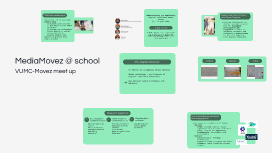VUMC PIV
Transcript: Evidence Based USGPIV Seth Dagnino RN,BSN,CCRN,VA-BC Becoming a Vascular Access Champion Assessment/Selection Introduction VHP Model What is a Vascular Access Champion? “Placing PIVCs is both a science and an art, and it needs to be in the hands of clinicians who have a thorough understanding of all aspects of vascular access and how they can affect patient safety,” Lee Steere, RN, CRNI, VA-BC, Unit Leader of IV Therapy Services at Hartford Hospital Objectives Objectives "Reduce liability, lower costs,and decrease length of stay, while promoting vascular preservation, greater patient satisfaction, and better outcomes" (INS, 2021). Clinician is competent in the use of vascular visualization technology for USGPIV insertion. This knowledge includes, but is not limited to, appropriate vessels, size, depth, anatomy and physiology, location, and potential complications (INS,2021). Remove variable practices and create standardization among all Vanderbilt USGPIV users Utilize current Vanderbilt SOP, Vessel Health and Preservation(VHP) model, INS 2021, AVA, and latest EBP as guiding principles Be familiar with INS Standards since they are cited as the benchmark in IV lawsuits Why Bother? Informs the clinician on status of the targeted vessels, Minimizes tissue trauma Fewer attempts (Lauren, 2020). Enhance patient satisfaction, reduce the amount of nursing time (Kanipe,2018) Decreases the amount of central lines placed due to poor access,(INS,2021) #9- Peripheral Vascular harm VASN/IV Therapy/VAC Superuser VAT team has designated desk personnel to help answer questions and advice regarding latest guidelines Many have obtained their VA-BC (Vascular Access Board Certified) Are to be main resources in seeking to learn fundamental Allows teaching to be centralized and based on latest data When To Use Ultrasound VUMC policy- "May bypass non ultrasound guided placement if patient has only one arm available, history of difficult IV access, and Morbid obesity" Receiving therapy of peripherally compatible infusions Limited visible, accessible, or palpable veins limited use of an extremity, such as renal failure, fistulas, lymph node surgery, mastectomy,neurological problems, Have a history of IV drug abuse Damaged superficial veins Blood Cultures pending CKD-attempt dorsum IV placement in dominant arm (AVA,2020) VHP Model "Vessel health and preservation (VHP) is a model applied to vascular access that structures EBP within four quadrants of medical care: assessment/selection, insertion, management, and evaluation of vascular access devices". Ensures patient safety, reduces complication risk with proper device selection, device longevity with proper maintenance, proper outcome evaluation (Moureau, 2019) In short, a system to reduce unnecessary risk to the patient Insertion Video 9min Lets watch a video first to help everything else make sense! Respect the Craft Take this seriously, seriously! Nerve Injury- Minor vs Major Minor injury- Results in Scar tissue formation (Neuroma) at the point of contact. Patient may require up to 12 months of rehab Major Injury- Needle tears nerve fiber causing Complex Regional Pain Syndrome-permanent, progressive, extremely painful, no cure... Narcotic pain control, extensive rehabilitation, nerve blocks, nerve removal, and nerve transplantation (Masoorli, 2007). Compartment Syndrome- poor site selection and innapropriate catheter length can cause extravasation leading to nerve damage Poor IV Placement Blamed for Pseudoaneurysm of Right Brachial Artery- "33-year-old man, reported to hospital May 3 for treatment of bilateral leg stump infection. On May 7, PICC was placed for ABX. After several unsuccessful IV attempts to access the left basilic vein, the basilic vein in the right arm was subsequently accessed. Plaintiff complained to staff about pain and swelling in the right arm and hand, claiming that the swelling was related to placement of the PICC. Although personnel assessed the arm and determined that nerve damage might have occurred during placement of the IV catheter, no further evaluation or diagnostic testing was done until an ultrasound revealed a pseudoaneurysm. 2 days later an intern placed a vascular surgical consult. Two days after, right forearm exploration and evacuation showed a right brachial artery injury and external compression of the median nerve. According to the plaintiff, the defendant's care resulted in a permanent neuropathy. He alleged that the defendant failed to properly monitor his condition after the PICC insertion and failed to notify appropriate physicians. The plaintiff also claimed that the defendant failed to order appropriate diagnostic tests and failed to intervene in a timely manner. The defendant denied any violation of the Standard of Care. The jury found in favor of the plaintiff for $1,097,431 (Los Angeles, California Superior Court #BC288632)" (Masoorli, 2007). This was caused by USGPIV placement! What to Look for Patient depositions reveal "electrical

















